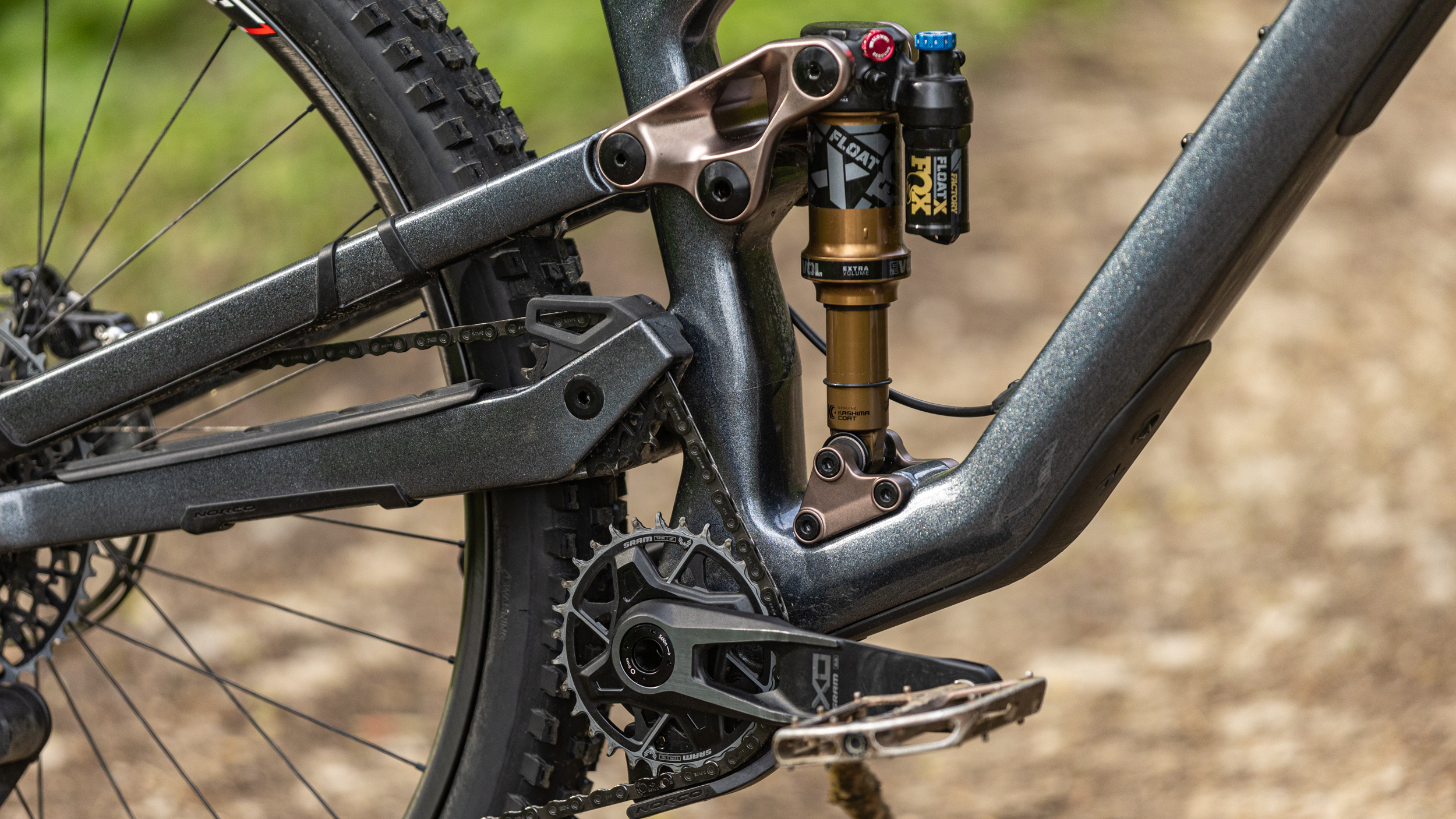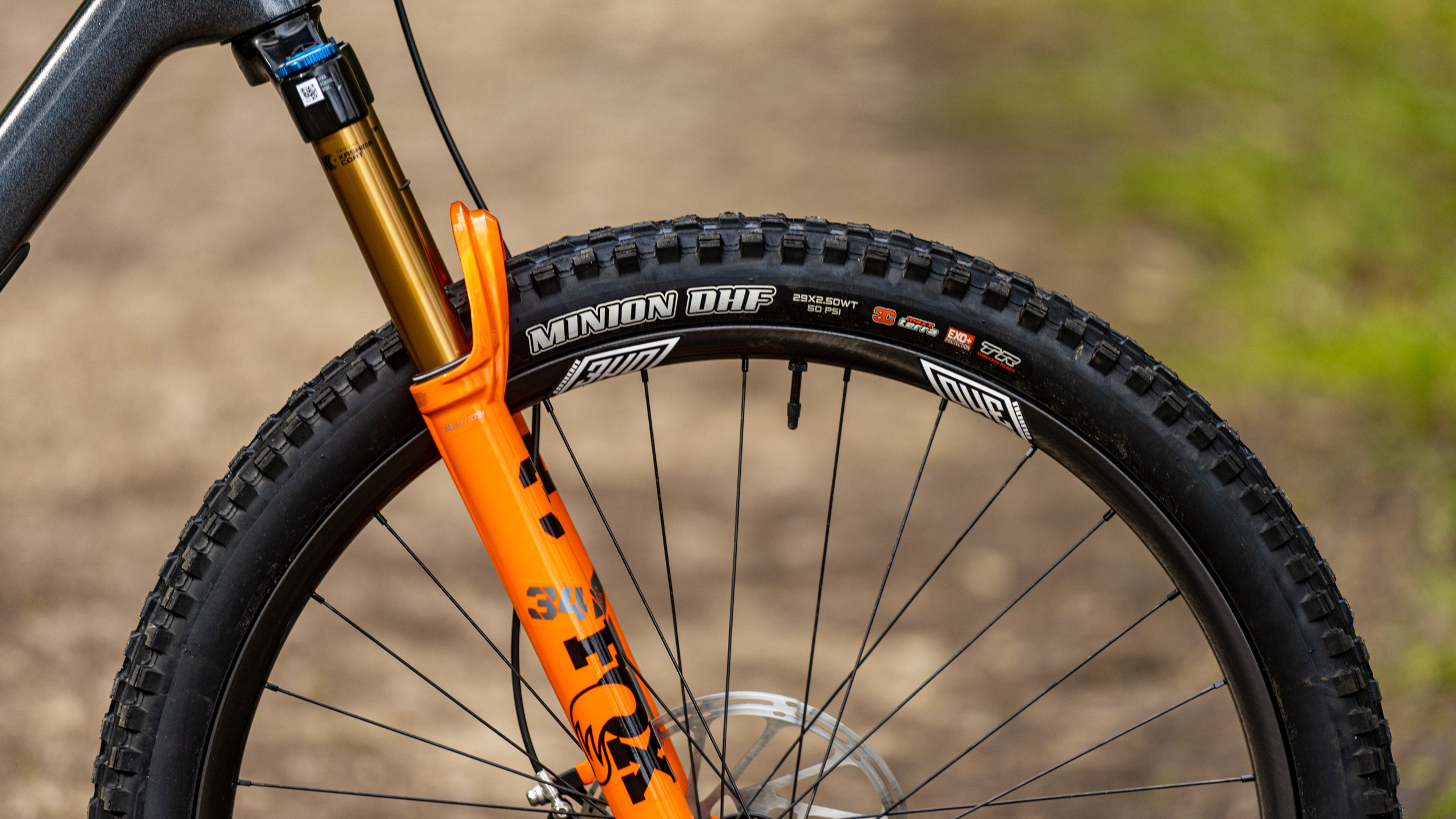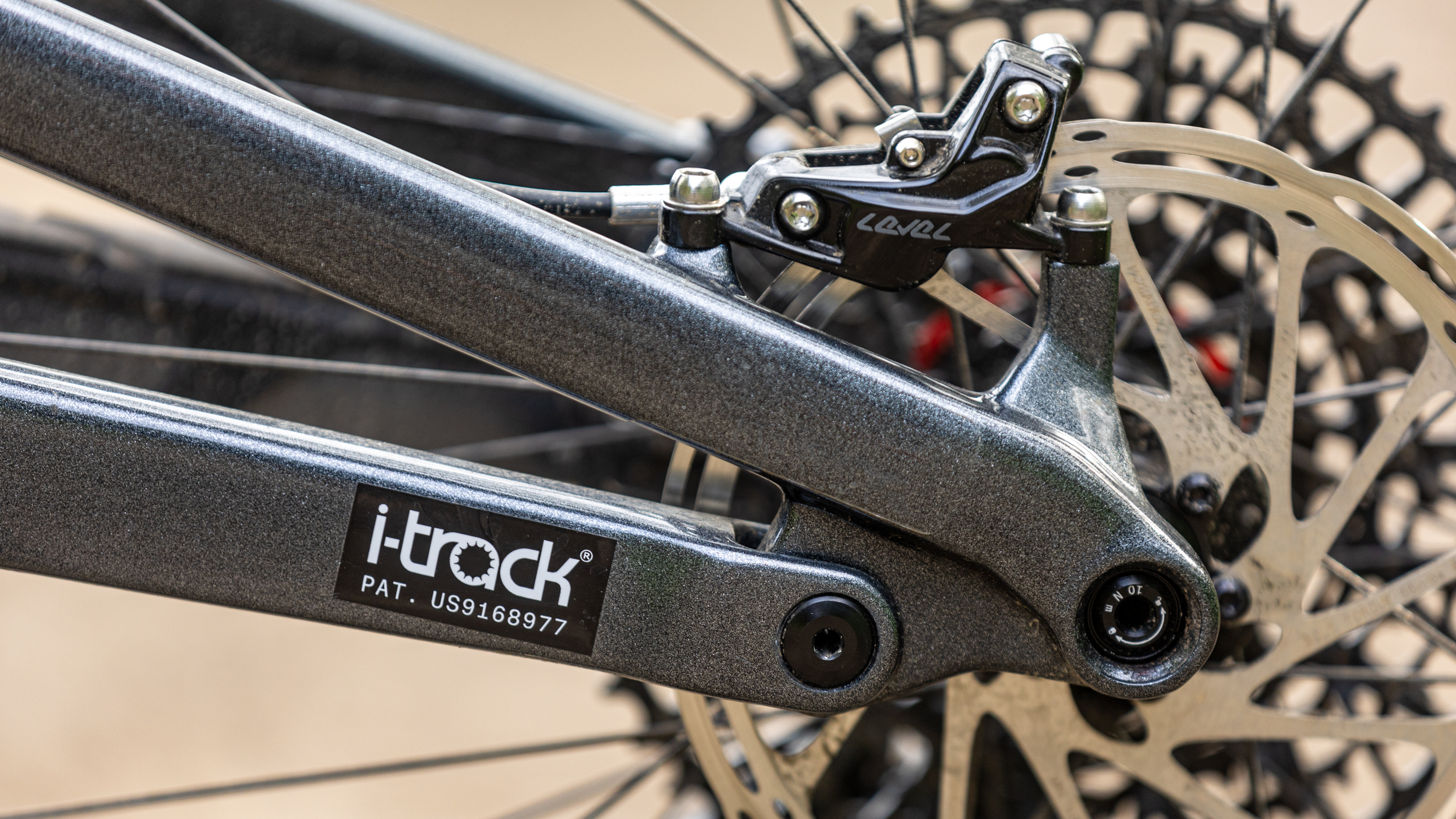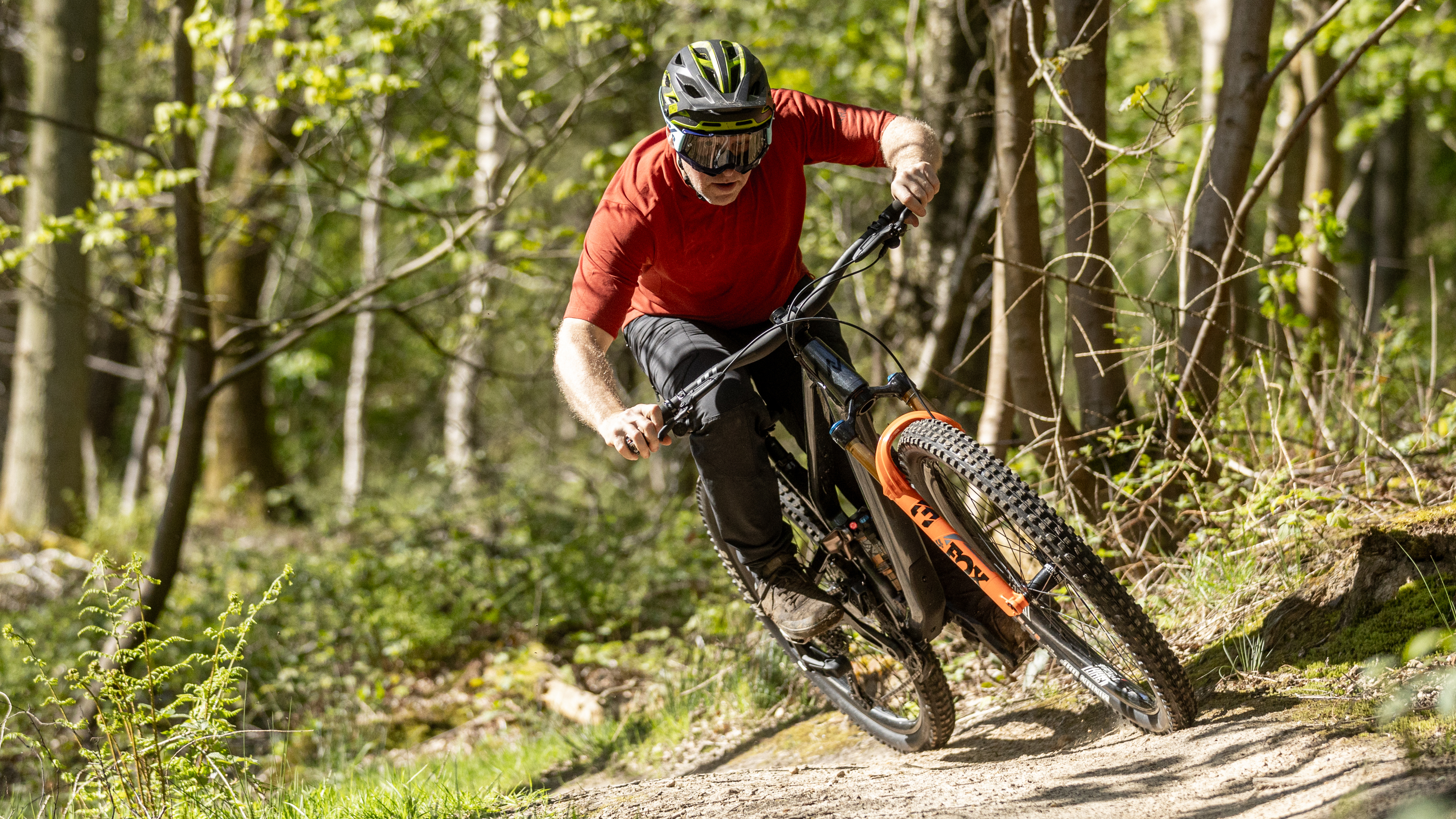Bike Perfect Verdict
Norco’s latest Optic is a big departure from the previous generation I loved and while some of the fresh changes work an absolute treat, I’m not sure the overall package ticks quite as many do-it-all ‘downcountry’ boxes as it did before.
Pros
- +
Rear suspension swallows bumps like a champion
- +
Could easily be convinced there is up to 30mm more rear wheel travel than advertised
- +
Nice frame shape with tons of standover clearance, good angles and good adjustability
- +
Great wheels, tires and many parts.
- +
Proportional chainstays bring meaningful size changes to maintain balance
Cons
- -
Heavy and slow up and along for its short travel category
- -
Noisy drivetrain with noticeable drag
- -
Active suspension isn’t the most efficient
- -
Brakes are laughably weak for the bike’s DH capability
- -
So expensive it’s not being brought into the UK
Why trust BikePerfect
While never really liking the name, I’ve been a long-time champion of the downcountry category, even racing a couple of enduros on a 120mm short travel trail bike because I like the way the best ones ride so much. Many happy miles have been spent on every generation of Evil’s Following and I’m now bombing around on a Santa Cruz Tallboy for a lot of my testing; all the while continually bleating on to mates (or anyone that’ll listen) that it’s all the bike you need for most UK trail riding.
On paper then, with short travel pumped up with extra downhill attitude, Norco latest Optic couldn’t really be more up my street. It follows the familiar formula of the best downcountry bikes of geometry edging towards an enduro bike for high-speed stability, but with less travel to enhance the hop-and-pop factor you rapidly start to lose once too much suspension starts smoothing out too much energy from rider inputs and terrain.
Not happy with being just any old downcountry bike, the Canadian brand is looking to build on the older Optic’s reputation as one of the most aggro bikes in the category by going full gravity vibes and adding a high-pivot and idler setup that, so far, has only really been common on DH and enduro bikes. It’s no stranger to the concept either, having an Aurum DH bike for six years already that Greg Minnaar is now racing on, and also a really refined Range enduro rig that’s also one of the most aggressive in its class.
The Optic I’m testing here is the top-end C1 carbon fiber 29er version with Fox Factory-level suspension, We Are One carbon wheels and SRAM electric gears and is about as blinged out as you’d expect for a bike costing over $9,000.
With the added drivetrain complications and presumably built tough enough to handle a hammering, it’s not exactly light though and clocks just over 15kg even with all the posh kit. UK distributors, Silverfish, currently only sell the much cheaper C2 model, but that bike looks a better deal anyway with sorted gear for £6,999 including a RockShox Pike Select+ fork, Performance Elite Fox shock and alloy wheels. This cheaper C2 bike also mysteriously gets far more fit-for-purpose Code R brakes than the SRAM Level stoppers here, which I’ll talk about more later on.

Design and geometry
I’m going to go a bit tech-heavy for a minute here, so bear with me. Pretty much the only other short-ish travel high pivot bike I can think of is Forbidden’s popular Druid, and while the two bikes look vaguely similar and share a 4-bar suspension design (upside down in Forbidden’s case), there are still significant differences.
Norco’s 5mm shorter travel HP design has 125mm of rear wheel travel and is called VPS-HP. It combines a 4-bar chainstay pivot design (like an FSR) with a much higher main pivot and then a 19t idler to manage the extra chain-growth (pedal kickback) this brings with it.
It's not that simple though, as with the idler mounted inside the Optic’s angled carbon chainstay, the upper chain line can change position relative to the cassette and the bottom bracket/front chainring as the suspension cycles. This gives even more bandwidth to tune preferred anti-squat and anti-rise characteristics, while still benefitting from the high pivot’s more rearward axle path (and better bump absorption). In total, the new Optic’s rear axle moves approximately 6-7mm rearward between full extension and sag to get out of the way of hits.
With less travel than the latest Trek Slash I tested recently and a more rearward idler, there’s no need for an extra lower guide here, but the way Norco lays it all out (with the idler non-concentric to the main pivot) means it has had to license the suspension design from i-track. It has apparently done loads of testing on the ideal idler position and reckons that “through extensive testing using an i-track configured idler location, anti-squat has been tuned for efficiency and responsive feel under power”.
Much like the high pivot Gen 6 Slash, the design gives tons of scope to jiggle around with the kinematic, but one of the main things brands seem to like is being able to maintain consistent anti-squat numbers throughout the travel to balance efficient pedalling with smooth support deeper in the stroke.
In terms of Norco’s chassis shape and construction, there is pretty much class-leading standover here (maybe the boutique Unno is better) with a really low top tube across all sizes (so the frame never feels in the way) and a 65-ish degree head angle and 32mm bottom bracket drop that keeps feet low to the floor for cornering stability.
Frame reach grows from diddy 422.5mm to enormous 522.5mm across five sizes (that use the numbers, not letters, which seem to be the latest trend for brands to express measuring frame length not frame height like in the olden days). And, because this is a Norco, size-dependent chainstays all grow in length with meaningful leaps to to keep the rider balanced in the center of the bike, regardless of height. This size-specific chainstay part is becoming trendy too, but Norco was one of the first to do it properly and also has a brilliant Ride Aligned suspension set-up guide to get you going. The size 4 (aka large) I tested was pretty rangy with 497mm reach and 433mm chainstays (which maybe don’t sound that long, but remember they grow up to 440mm deeper in the travel).
Seat angles vary by frame size, but are roughly around the 78-degree effective sweet spot that best balances seated climbing with a comfy pedaling position for undulating terrain, although it feels marginally steeper than rival frames with similar numbers to me, but this could just be as the frame is a couple of cms longer than I’m used to. The Optic bike comes stock as a 29er that makes total sense as a fast trail bike, but Norco also offers aftermarket ‘Missing Link Kits’ to change rear wheel size to an MX mullet set up.
One thing you won’t want to change is the threaded BB, smooth clean lines and the fact that carbon versions like this one have a neat tube-in-tube cable routing and no daft cables going through headset bearings. There is no in-frame storage, but room for a full-sized water bottle and extra cargo bosses under the low slung top tube.

Components and build
Norco’s priciest C1 build uses Fox Factory level suspension front and rear including a totally dialed Float 34 (that is probably still my favorite trail fork), and a Float X with climb switch. The shock has a trunnion mount and 5mm more stroke than the outgoing Optic model to retain the same 125mm rear wheel travel while adding extra progression. Norco says hard-charging riders should now be less dependent on volume spacers to get support.
Aside from the gold-coated top-tier Fox kit, there’s plenty other gear of the pricey variety including SRAM’s electronic T-Type AXS drivetrain. It’s the lighter and more expensive XO1 version with SRAM’s posh rounded-out-inside chain and longer-lasting chainring finish, rather than cost-saving GX Eagle too. The whole setup proved as solid and smooth as I’ve experienced elsewhere, and I reckon T-Type is a real advantage on these high pivot bikes where the slow and precise gear shift and every extra bit of chain smoothness can help counteract having a longer, more circuitous routing and an extra cog to spin through.

One SRAM bit of kit that was completely not up the job, however, was the Level Stealth SLR brakes. 4-piston and 200/180mm HS2 rotors they might be, but with my 84kg weight, I reckon I might just as successful wedging my shoe in between the frame and the rear tire when wanting to completely stop suddenly. Yes, the Levels do work and kind of slow you down OK, but even experimenting with different pads, I couldn’t get the kind of bite or immediate power you’d want for the sort of speeds this Norco is happy going downhill at. God only knows why the priciest bike in the range didn’t come with the meatier Codes that are only a few grams heavier and are on other models?
A branded Deity Skyline 800mm wide carbon bar ticks the box for high-end kit, but once trimmed a bit felt a bit too stiff to me. One carbon item on the spec sheet that really impressed though were the We Are One Union carbon wheels with Industry Nine hubs. I’ve found Hydra hubs obnoxiously loud in the past, but here the 1/1 hubs offer just a subtle whine and the fast pick up combined with the smooth and zippy wheels felt really rapid and lively and sems to roll along fast where some carbon rims can feel a bit staccato.
The Norco’s Maxxis Minion DHF and Dissector tire combo with EXO+ rear casing is a smart choice too, and, even if I really don’t like the DHF when it’s wet or greasy as the crown rocking big surface area blocks seems to lack cut and ‘float’ across damp surfaces, which feels sketchy to me, I know many riders love ‘em. The One Up dropper post works fine as always, but seems a little bit cheap for a 10K rig, and am I the only one who finds the tip of the remote too sharp and too close to the left thumb?

Ride and performance
Talking of those We Are One wheels feeling zippy and snappy, it’s a good job too, as while this new Optic could be considered to pedal OK for an enduro bike, I really didn’t rate pedaling efficiency and drive under power here compared to other short travel trail bikes.
I don’t know if this is because I’m a flat pedal ‘stomper’ rather than a clipped-in circler, but instead of a smooth continuous power band you get on some bikes, the Optic’s back end bobs under hard pedaling and I just couldn’t get the chassis to sit still when cranking and getting about the place. It feels like a chunk of energy is wasted on the downstroke and, rather than driving you forward with each crank, there’s kind of a soft and uneven pedal cycle that even moves too much for my taste when the Float X shock is locked out.
During testing, I back-to-backed this sensation with the Santa Cruz Tallboy on the exact same climb to see if I wasn’t imagining things, and I reckon that thing runs rings around the Norco in terms of converting energy from pedal power into positive forward motion. No one else is moaning about a spongy feel under power and pedaling efficiency has been widely praised elsewhere and obviously works for other testers like my MBR colleague Jamie who rides clipped in and is lighter than me. I’m sticking to my story though – the new Optic is significantly slower and less efficient at climbing than many in class, including its lighter predecessor I tested last year.
On top of this, there’s also a sense of extra drag here compared to many bikes and the idler setup is both noisier and feels less smooth than some high pivots like Trek’s latest Slash, which is especially odd, since that has the same XO1 T-Type drivetrain and also runs through an extra lower MRP guide and chain wrap that should potentially make it worse. Norco’s upper idler also developed an annoying squeak during testing to add to the chain rumble that you had to put up with while pedaling unless you kept it freshly lubed.
I’m aware that’s a lot of complaining already, but this is a nine grand bike after all, and to balance it out a bit, the new Optic is clearly really good at winching up steep technical climbs on looser surfaces. There is great grip and bite and I also felt really comfy with the seated pedaling position everywhere, despite this test bike being slightly larger than I’d usually prefer.
Let’s face it though, I wasn’t expecting the fastest ever XC-like experience you get with a downcountry bike at the SID end of the spectrum, rather than the Pike/Fox 34 end here, and this obviously isn’t going to get a shift on uphill anything like a 4kg lighter Transition Spur or something, so let’s not focus on the climbing or pedaling prowess of a machine that’s arguably the least optimized for it in the entire segment.
What we’re here to find out is if you can charge as hard as on a longer travel enduro bike without killing yourself and still grin ear-to-ear about having all the feedback and pop-factor of a shorter travel rig. Does Norco’s new optic deliver on its promises of being able to pump and milk terrain for maximum excitement and engagement without any sense of getting too bogged down and disconnected by extra travel you don’t really need?
Well, my answer to this is, err, yes, kind of. That’s not a cop out, just that the Optic VPS-HP excels in some departments like quietening trail noise better than sound-canceling headphones and absorbing landings so sweetly you sometimes don’t even realize the rear tire left the ground, but a few aspects of the handling are less sweet.
Where its Optic predecessor had real zip in and out of turns and punching through dips and hollows, this new version can feel a bit less exacting with more of a floaty, let-it-go-where-it-wants, kind of vibe. You can ride a bit more a longer travel rig, which kind of negates some of the precision you might be after with a 125mm bike.
One other slight issue here is that the handling during cornering is not quite as punchy and precise as I’d want. In some scenarios, the handlebars feel like they get further away mid-turn when the bike’s suspension compresses, kind of like rider weight shifts slightly rearward at the apex and your arms get stretched out. Some MX bikes have this effect a bit anyway, but this is obviously a full 29-er (as I tested it) and might be something to do with the relatively short rear end lengthening as you load the bike in the turns.
Anyway, this is only a mild sensation and might also be a consequence of riding a bike that’s much longer in size ‘large’ (S4) than many rival bikes I usually test. I added a bit more air to the shock (which made it hard to reach full travel) and also upped air in the fork to counter it, which actually worked fine and restricted as much rider weight shifting forward in deep G-out bucket turns.
This effect clearly doesn’t stop you chucking the Optic about side-to-side on fast flowy descents either, and with the frame being stiff and solid, having a low dynamic BB and so low slung it’s always out of the way of knees and thighs, it’s very quick and easy to flip from tire edge to edge when you lean it.

By far the Optic’s trump card and its stand-out characteristic, however, is the high pivot rear suspension’s smoothness, which is pretty spectacular gobbling up repeated hits, as long as you have even a small amount of gravity on your side.
Hammering down rooty and rocky (but not severe) singletrack trails with 10-20-degree gradients like many of us will ride, there are moments you wouldn’t want to be on any other bike. Moments where the Norco’s back end floats through the chop and you calmy steer and focus or choose to pump and push here and there to get some extra life out of the ground and get rewarded for inputs and efforts.
During those times, the Norco’s rear tire caresses the ground and handles square edge hits up to fist size with barely a ripple. It’s especially brilliant at absorbing impacts landing off small jumps or trails tipping down a foot or two off steep root steps to flat. These are the exact kind of jabs that can destabilize and give you a spike or bounce back sensation on other bikes with equivalent travel (including Santa Cruz’s Tallboy to some extent), whereas here you just keep on trucking. The high pivot suspension apparently doing its thing and allowing you to ride with more of a 150mm bike feeling of security and calmness than 125mm bike. All this smoothness is also perfectly matched by a real class act of a fork in Fox’s 34 fork up front with a DH-level Grip2 damper.
If all trails pointed slightly downhill and never went too steep or too sharply right-angled, this new Optic would really rip and be a hell of a machine, but a short travel trail bike has to do it all, up and down, with minimal compromises. As an all-rounder, it’s hard not to compare it directly with its predecessor, and while bump swallowing is superior here, no question, it doesn’t equate to the new high pivot Optic being more well-rounded overall. Compared to an older model that seemed to really rip it up everywhere, slash through turns and pedal and climb with a lot more energy, this new version isn’t quite as potent for me. And seeing as that the 2023 Optic is still available with plenty of killer deals around online, it still has the edge for me in terms of what you’d want a short travel trail bike for in the first place.

Verdict
This new Optic with high pivot suspension and an idler is a downcountry bike with amazing bump-swallowing capability that absolutely sings flowing down choppy trails, but it also pedals, climbs and weighs similar to an enduro bike, which makes its unique capabilities less appealing. This C1 version is very expensive, has underpowered brakes and I reckon Norco’s new changes to the suspension design haven’t been 100 percent successful in every department.
The older and lighter version of the Optic shared the modern, slacked-out geometry here that allows you to ride safely at speed and also offered sublime rear suspension. Overall though, it had a much more energetic attitude and sharper handling. With some killer deals still kicking about online for that bike, it’s likely where I’d be putting my cash if I was buying a new Optic right now.
| Attributes | Notes | Rating |
|---|---|---|
| Downhill performance | One of the best in the category | ★★★★★ |
| Uphill performance | A bit sluggish and too active when pedaling | ★★★ |
| Components and build | Brakes are hugely underpowered | ★★★ |
| Value for money | A lot of cash to have some compromised parts on board | ★★★ |
Test conditions
- Terrain: Local hand-cut trails, armored trail center, enduro tracks, small jumps
- Conditions: Slippery/greasy through to bone dry and dusty
- Temperature: Summer and Autumn temps, 50 to 80 F (10-27 C)
Tech Specs: Norco Optic C1
- Discipline: Downcountry/trail
- Price: $9,099.00 (C1 model not available in UK)
- Frame: Carbon fiber VPS HP, 125mm travel, UDH
- Shock: Fox Float X Factory, 185x50mm trunnion mount
- Fork: Fox Factory 34 Factory Grip2, 44mm offset, 140mm travel
- Wheels: Industry 9 1/1 110/148mm hubs, We Are One Union Carbon rims
- Tires: Maxxis Minion DHF 29x2.5 front, Dissector rear 29x2.4in, MaxxTerra
- Drivetrain: SRAM XO Eagle 32t, 170mm chainset, SRAM XO AXS T-Type derailleur and shifter pod, SRAM XS-1295 10-52t cassette
- Brakes: SRAM Level Stealth Silver, 4-Piston brakes, 200/180mm Centreline rotors
- Seatpost: One-Up V2 dropper post 210mm reach
- Saddle: Fizik Alpaca Terra Wingflex
- Handlebar: Deity Skywire Carbon 800mm, 25mm rise bar
- Stem: Norco CNC Alloy 40mm
- Sizes: S1, S2, S3, S4, S5
- Weight: 15.2kg (S4 tested)
- Size tested: S4
- Head angle: 64.6 degrees
- Seat angle: 73.7 degrees
- Effective seat angle: 78.5 degrees
- Downtube: 755mm
- Reach: 497mm (size S4)
- Chainstay: 435mm
- Front centre: 832mm
- Bottom bracket height: 341mm
- Wheelbase: 1,267mm

An ex-elite downhill racer, Mick's been mucking about and occasionally racing mountain bikes for over twenty years. Racing led to photo modelling and testing kit for magazines back in the day, and, nowadays, he's mostly riding enduro-style terrain on conventional and electric bikes. As curious as ever about products and tech, he's as likely to be on the other side of the lens or computer screen rating, reviewing and shooting all the latest gear. Mick's list of regular clients includes Bike Perfect, MBR, MBUK, and most of the leading UK MTB publications at one point or another.

